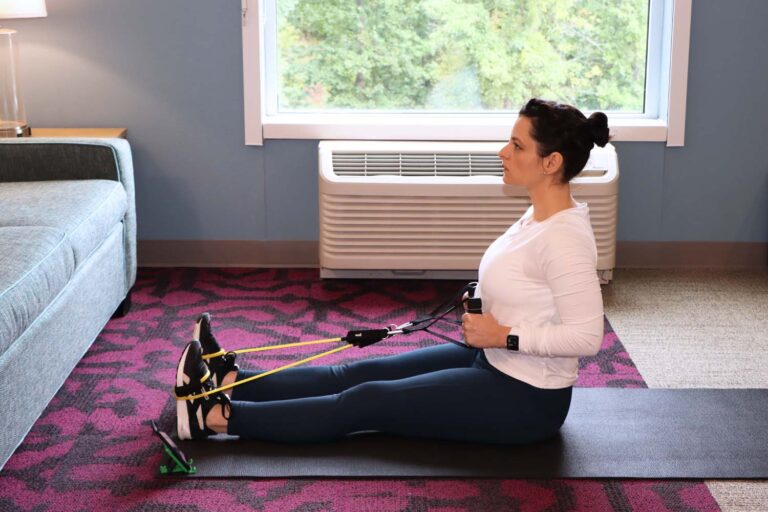How to Stick to Your New Year’s Fitness Resolutions
It’s another New Year, which means you may have some new fitness resolutions to conquer. Are you determined to make this year different from the rest?
Do you find yourself wanting to get fit every year, but just can’t seem to make it happen? Would you like to learn how to stick to your new year’s fitness resolutions for good?
You’re not alone in this struggle.
Recent studies have shown that while 95% of New Year’s Resolutions are health and fitness related, many of us abandon them as early as mid-January. A comprehensive joint study by location apps Foursquare and Citylab has even identified the second Saturday of February as “Fall off the Wagon Day,” when visits to fast-food restaurants noticeably spike as gym attendance drops to an all-time low.
Understanding fitness resolution adherence – the ability to maintain exercise habits over time – requires recognizing both psychological and practical factors that influence our behavior. This comprehensive guide explores proven strategies to transform your annual resolution into a sustainable lifestyle change.
HOW TO STICK TO FITNESS RESOLUTIONS AT A GLANCE
- • Find Your Deep Motivation: Identify personal benefits beyond appearance (energy, mood, strength)
- • Set S.M.A.R.T. Goals: Start small: “Walk 30 minutes, 3x weekly” before adding more
- • Track Progress: Use apps, photos, or journals to monitor multiple metrics
- • Get Accountability: Connect with a coach or partner for external motivation
- • Schedule Workouts: Block calendar time for exercise like important meetings
- • Enjoy Your Activity: Experiment until you find exercises you look forward to
- • Prepare for Motivation Dips: Have a plan for low-energy days (shorter workouts)
- • Start Today: Don’t wait for Monday or next month – begin now with any activity
- • Get Started: Try Future coaching with 50% off your first month
Why Most People Abandon Their New Year’s Fitness Resolutions (And How You Can Be Different)
According to fitness industry research, here are the top reasons people give up on their health goals:
- 42% Find it too difficult to follow a consistent workout routine or diet plan
- 38% Struggle to get back on track after they stopped exercising for a short period
- 36% Can’t seem to fit regular fitness activities into their busy schedule
Do any of these disappointing statistics sound familiar? This year can be different.
Instead of making excuses and letting another year pass without reaching your fitness goals, I’m sharing proven, effective strategies to help you stay motivated so you can finally achieve the results you want. These aren’t just theories – these are approaches that have helped thousands of people (including myself) transform their fitness journey.
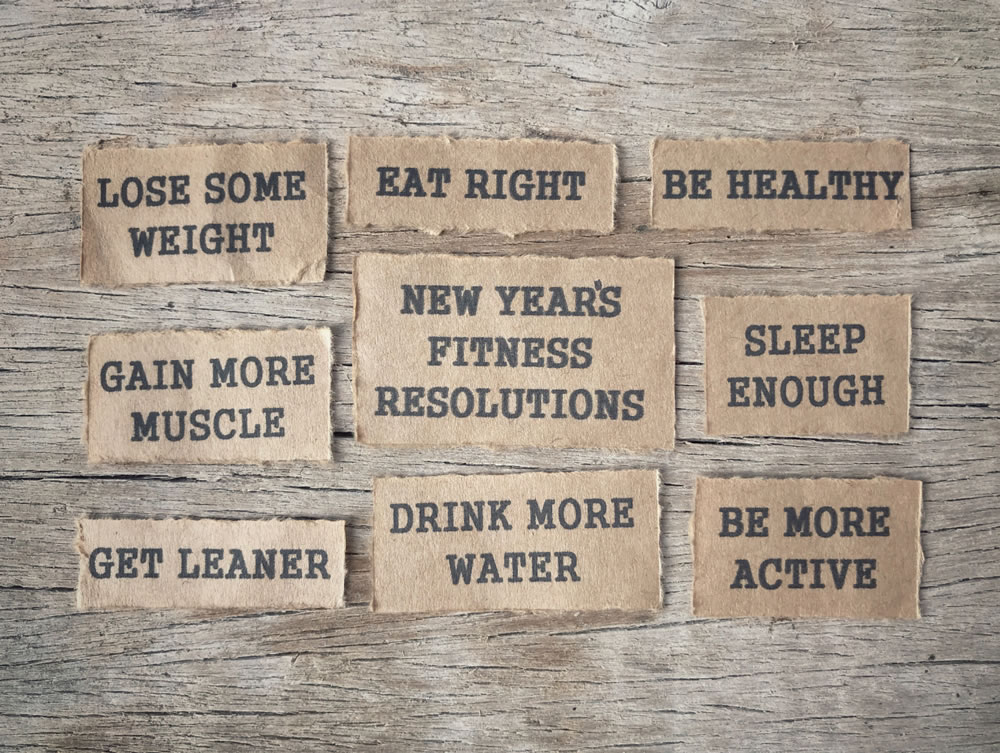
1. Discover Your Deeper ‘Why’ (Make Fitness Personal)
Simply declaring you “want to look better” or “lose weight” as your reason for getting fit often isn’t motivating enough to sustain long-term habits. This is especially true if you only want to change because you feel pressure from social media, family members, or friends.
Intrinsic motivation – the drive that comes from personal values and satisfaction – is significantly more powerful for long-term habit formation than extrinsic motivators like appearance or others’ approval.
While exercise can certainly help your body transform, the more powerful, sustainable benefits of getting fit include:
- Increased daily energy levels (no more afternoon slumps)
- Improved overall mood and mental health (exercise is proven to boost serotonin)
- Enhanced productivity at work and home
- Better metabolic health (beyond just weight)
- Dramatically increased self-confidence
- Functional strength for everyday activities
➡ Action step: In a dedicated fitness journal or on your device, create a detailed list of what finally getting fit would truly mean to you personally. When your fitness goals connect to your deeper values (not external pressures), research shows you’re significantly more likely to achieve them. Having this list to review during challenging moments in your fitness journey will remind you why you started and keep you motivated to reach your ultimate goal.
💡 Need extra motivation? Check out our proven fitness motivation strategies for tough days.
2. Create S.M.A.R.T. Fitness Goals (Simple, Measurable, Attainable, Realistic, Time-bound)
One of the biggest reasons people abandon their New Year’s fitness resolutions is setting unrealistic expectations within impractical timeframes. This leads to discouragement when progress doesn’t match our imagination.
Goal-setting theory in behavioral psychology confirms that specific, measurable objectives with clear timelines drastically outperform vague intentions like “get in shape.”
For example, if you haven’t exercised regularly in months (or years), it’s not realistic to expect dramatic physical changes in just a few weeks or to suddenly transform into someone who loves spending hours at the gym daily.
Start small: A simple, achievable goal might be: “I will walk for 30 minutes three times per week for the first month.” Once this becomes a comfortable habit, gradually add a 15-minute strength training session twice weekly to build muscle and accelerate results.
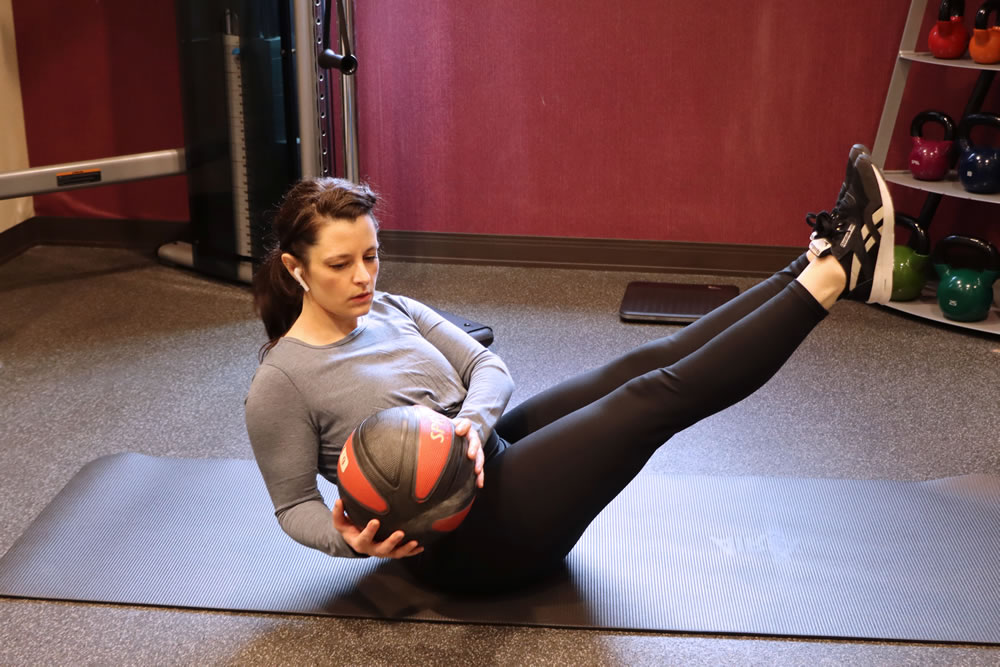
3. Make Your Fitness Goals Specific and Trackable
After identifying your personal motivation, writing down concrete goals with specific metrics is crucial. According to a study in the British Journal of Health Psychology, people who documented their intentions and tracked weekly progress were more successful in sticking with their fitness plans.
Implementation intentions – detailed plans specifying exactly when, where and how you’ll take action – bridge the gap between intention and behavior, increasing follow-through by up to 91% according to research.
Break down larger goals: If your aim is to lose 20 pounds over 5 months, work backward to create weekly mini-goals. That translates to 4 pounds per month or 1 pound weekly. Now, determine the specific activities and nutritional approach needed to achieve this consistent progress.
For example, your weekly action plan might include:
- Walking 10,000 steps five days per week (tracked on fitness app)
- Strength training for 30 minutes three times weekly
- Consuming approximately 1,800 calories daily with 100g protein
- Drinking 80 ounces of water daily
- Getting 7+ hours of sleep each night
💡 Resource tip: If you need help calculating your specific needs, use free online fitness calculators to determine your BMR (Basal Metabolic Rate) and daily calorie targets. For more personalized guidance, consider consulting a nutritionist or working with a certified fitness coach who can tailor recommendations to your unique body and lifestyle.
4. Track Your Progress Consistently (What Gets Measured Gets Improved)
Regularly monitoring your fitness journey creates a feedback loop that boosts motivation and enables smart adjustments. Research from the National Institutes of Health shows that the simple act of tracking progress significantly increases the likelihood of goal achievement across all types of health objectives.
Self-monitoring is recognized by cognitive behavioral psychology as one of the most effective behavior change techniques, particularly for fitness and nutrition habits.
💡 Tracking multiple metrics beyond weight is crucial. Learn how to lose those stubborn last 10 pounds by focusing on the right measurements.
You can monitor progress using:
- A dedicated fitness journal
- A smartwatch or fitness tracker
- A specialized fitness app that syncs with your phone
- Weekly progress photos (same lighting, time of day, and poses)
- Strength and endurance measurements (weights lifted, distances covered)
My personal game-changer has been the Future fitness app, which combines progress tracking with personalized coaching. The visual representation of your improvements, no matter how small, creates powerful momentum that keeps you moving forward when motivation naturally fluctuates.
5. Embrace Adaptation (Your Fitness Journey Will Evolve)
Once you establish initial fitness goals, remember they aren’t permanently fixed. Regularly reassessing and adjusting your targets based on progress, challenges, and changing circumstances is essential for long-term success.
Behavioral flexibility – the ability to adapt plans while maintaining core habits – is a hallmark characteristic of successful long-term exercisers according to sports psychology research.
If you don’t meet a specific deadline, don’t abandon the entire journey. Simply recalibrate your timeline and keep progressing.
Research from the University of California found that people who viewed setbacks as temporary delays rather than failures were much more likely to eventually achieve their health objectives.

6. The Science of Accountability (My Personal Breakthrough)
The single most powerful factor in my fitness transformation was establishing genuine accountability. According to the American Society of Training and Development, having someone hold you accountable for your commitments increases your chance of success by up to 95%.
External accountability creates what behavioral scientists call “commitment devices” that bridge the gap between our intentions and actions by adding social consequences to our choices.
For years, I tried numerous approaches hoping to find that magic solution to stay consistent with fitness:
- Joining various gym memberships
- Taking trendy group exercise classes
- Following celebrity workout programs
- Purchasing countless fitness gadgets and equipment
The fundamental problem? All these options still relied entirely on my internal motivation and self-accountability. When life got busy or energy dipped, nothing external kept me going.
The solution: I needed structured, expert accountability from someone invested in my success.
While finding a dedicated workout partner or joining fitness communities on social media can help, the true game-changer for me was connecting with a professional fitness coach through the FUTURE fitness app. This platform is built on behavioral science principles of accountability and personalization.
My personal experience: After struggling with on-and-off fitness routines for over 8 years, I finally committed to Future coaching and lost 18 pounds in 5 months while building noticeable muscle definition – something I’d never achieved with any previous attempt. More importantly, I’ve maintained this routine for over a year now, breaking my previous record of 3 weeks of consistency.
What makes Future fundamentally different from other fitness solutions:
- Personalized programming: Your coach creates custom workouts specifically designed for your goals, preferences, and available equipment
- Daily accountability: Coaches check in regularly to monitor progress, answer questions, provide form corrections, and deliver motivation exactly when needed
- Adaptation expertise: When life inevitably disrupts your routine, coaches immediately help adjust plans rather than letting you fall off completely
The consistent accountability and creating healthy habits transformed my entire relationship with fitness. I’m now in better shape than ever before and genuinely look forward to my workouts. My Future coach helped me discover enjoyment in fitness I never thought possible.
Real Results: Key Benefits Since Working With a Future Fitness Coach
- Daily check-ins create immediate accountability – My coach’s morning messages instantly put me in workout mode, even on days when motivation is low
- Workout programming is handled by experts – I never waste time wondering what exercises to do or how to structure routines (which I’m terrible at planning)
- Maximum convenience – No gym membership required, no commute time wasted, and minimal equipment needed
- Effective challenge calibration – My coach assigns exercises I’d never select myself, leading to balanced results I wouldn’t achieve alone
- Habit formation expertise – The structured approach helped exercise finally become an automatic part of my routine after years of inconsistency
- Enjoyment breakthrough – Exercise has transformed from dreaded obligation to something I genuinely look forward to (especially cardio, which I previously avoided)
- Visible physical changes – My arms are more defined, core is more developed, and overall body composition has visibly improved
- Seamless technology integration – The Future platform syncs with other fitness apps and Apple Watch to consolidate progress tracking
- Professional expertise access – Future coaches are highly credentialed fitness professionals who have trained Olympic athletes, professional sports teams, and elite college programs – giving everyday people access to world-class training knowledge
- Surprisingly affordable – Compared to in-person personal training ($70-150/session), Future costs roughly the same as a daily coffee habit while providing continuous support
Find the Future coach that’s right for your specific goals with this quick questionnaire!
If you’ve repeatedly struggled to maintain fitness routines or meet resolution goals, partnering with a Future coach might be the missing element you need to finally break through. The investment in accountability produces returns far beyond physical changes.
➡ Read our comprehensive review of Future here
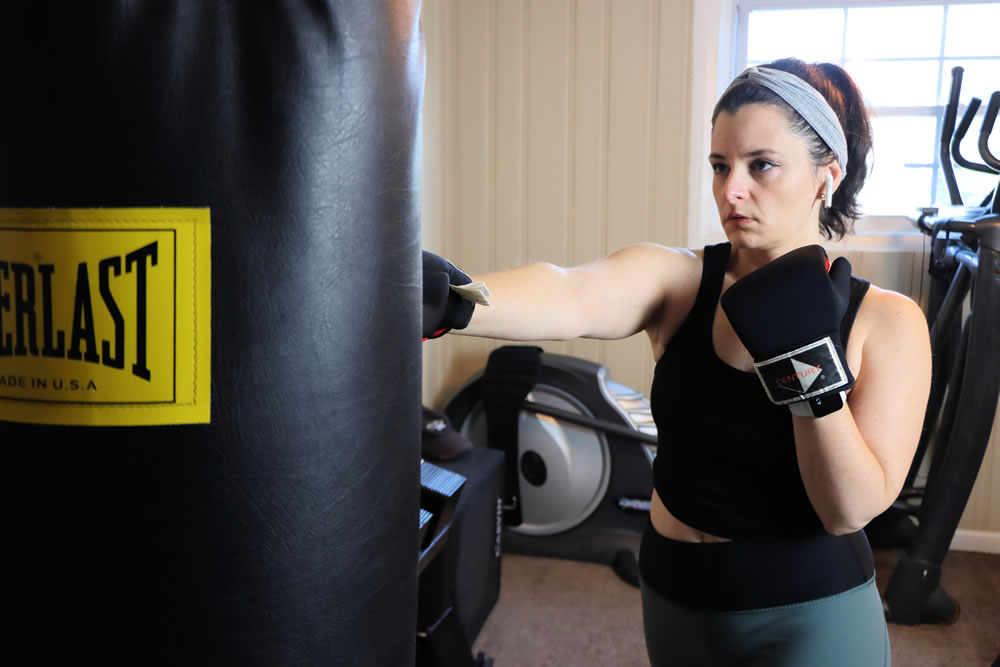
7. Schedule Exercise Like Important Appointments (Protect Your Fitness Time)
Many people claim they “don’t have time” for exercise, but research from the Mayo Clinic reveals this is typically a perception issue rather than reality. The average American spends 3+ hours daily on social media and entertainment platforms.
Time blocking, a productivity technique where you schedule specific activities during dedicated time slots, has been shown to dramatically increase follow-through on intended behaviors like exercise.
Effective fitness doesn’t require hours of daily commitment. Even 20-30 minutes of focused exercise 3-4 times weekly can deliver significant health benefits according to the American College of Sports Medicine.
Schedule optimization: Identify your personal energy patterns and preferences. Are you naturally more energetic in the morning or evening? Schedule workouts during your peak energy windows when possible.
You don’t need to wake at 5am unless that genuinely works for your body and schedule. The “best” time to exercise is whenever you’ll consistently do it. With coaching apps like Future, your fitness routine adapts to your life instead of forcing artificial schedules that aren’t sustainable.
Even with busy schedules, consistency is possible. Try these fitness tips for travelers to maintain momentum anywhere.
8. Prepare Your Environment for Success (Reduce Friction)
A study in the British Journal of General Practice found that environmental preparation significantly increases follow-through on health intentions. One simple but effective strategy: lay out your workout clothes and equipment before going to bed.
Environmental design is a powerful behavior change approach that reduces the “activation energy” needed to start positive habits while increasing friction for undesired behaviors.
This visual cue creates both a psychological commitment and reduces morning decision fatigue. When your workout gear is ready, you’re essentially telling your brain: “This is happening.”
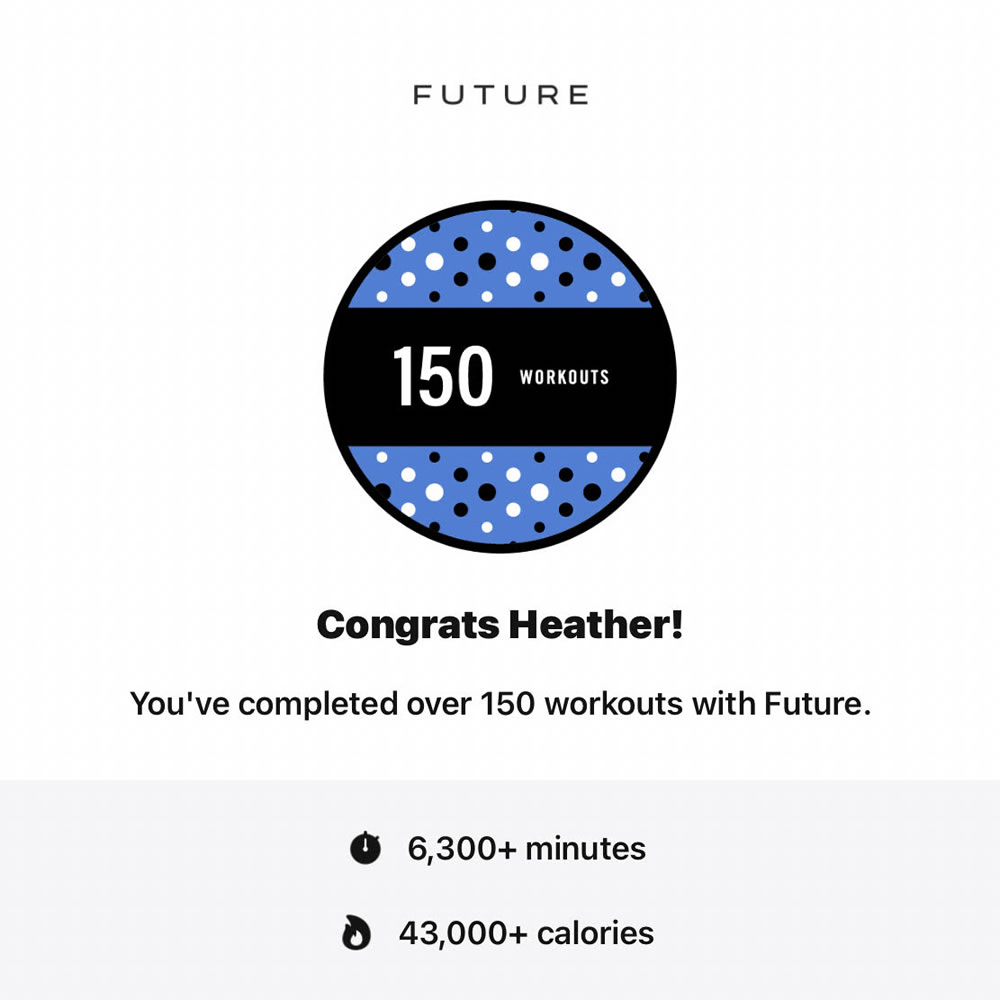
9. Practice Self-Compassion While Maintaining Standards
Perfect adherence to any fitness program is unrealistic and unnecessary for success. Research in the Journal of Personality and Social Psychology shows that self-compassion after missing workouts actually increases the likelihood of getting back on track compared to harsh self-criticism.
Self-compassion has been demonstrated to significantly outperform self-criticism for maintaining motivation after setbacks, especially for health behaviors like exercise adherence.
If your schedule calls for a 45-minute workout but you only have 20 minutes available one day, a shortened session is infinitely better than skipping entirely. While recognizing when you’re making legitimate excuses is important, being excessively rigid often backfires for long-term adherence.
Reward systems work: Behavioral scientists at the University of Chicago found that structured rewards for milestone achievements significantly increased long-term adherence to health goals. After completing your first week of consistent workouts, treat yourself to something meaningful but not counterproductive to your goals.
10. Find Activities You Genuinely Enjoy (Fitness Doesn’t Have to Be Punishment)
One of the biggest barriers to consistent exercise is viewing fitness as an unpleasant obligation. This mindset makes each workout feel like a willpower battle.
Not sure where to start? Our guide on how to get fit at home for beginners offers accessible options for any fitness level.
Exercise enjoyment is one of the strongest predictors of long-term adherence according to sports psychology research, outperforming even strong initial motivation.
My perspective transformed completely after working with my fitness coach to discover activities that generated both results and enjoyment. As physical improvements became noticeable, my intrinsic motivation grew proportionally.
While strength training has become my foundation because of visible results, effective fitness can include countless activities:
- Dance-based workouts
- Yoga or Pilates
- Martial arts
- Cycling (indoor or outdoor)
- Swimming
- Hiking or trail running
- Rock climbing
- Tennis or pickleball
- Group sports
The key is experimentation. If you don’t immediately know what physical activities you enjoy, keep exploring with an open mind. When you genuinely like your workout modality, exercise transforms from “work” to something you actively anticipate.
11. Prepare for Motivation Fluctuations (They’re Normal and Expected)
Psychology research confirms that motivation naturally ebbs and flows for everyone – even elite athletes experience periods of lower drive. External factors like work stress, family obligations, temporary illness, or not seeing expected results can temporarily dampen enthusiasm.
Motivation variability is a well-documented phenomenon in exercise psychology. Understanding that motivation naturally fluctuates helps prevent the common “all-or-nothing” mindset that derails fitness journeys.
The difference between those who succeed long-term and those who don’t isn’t constant motivation – it’s having systems to push through low-motivation periods:
- Start small – Commit to just 5-10 minutes on low-energy days
- Use music strategically – Create playlists that energize you
- Remember past successes – Review your tracking data showing progress
- Modify intensity – If high-intensity isn’t happening, switch to moderate activity
- Leverage your accountability system – This is where coaching becomes invaluable
Remember: I consistently feel better after completing a workout (even a modified one) than skipping it entirely. The post-exercise endorphin release is a reliable mood enhancer regardless of initial motivation levels.

12. Start Your Fitness Journey Today (Not Monday, Not January 1st)
Psychological research from the University of Pennsylvania shows that arbitrary “fresh start” dates often create false permission to delay beginning healthy habits. While January 1st carries symbolic weight, the most effective starting date for fitness improvement is always today.
Implementation delay is one of the primary reasons fitness intentions fail to translate into lasting habits. The psychological distance created by postponing action weakens commitment and reduces follow-through probability.
Even if you didn’t begin your resolution journey on New Year’s Day, that has zero impact on your potential for success. The best fitness programs focus on consistency over time, not perfect calendar alignment.
13. Improve Sleep Quality for Better Fitness Results
Research published in the Journal of Clinical Sleep Medicine demonstrates that quality sleep significantly impacts exercise performance, recovery, and adherence. Adults averaging less than 7 hours of sleep were 73% more likely to abandon fitness routines compared to those getting 7-9 hours regularly.
Implementing a proper sleep hygiene routine can transform your rest quality and exercise recovery.
Sleep-exercise bidirectionality is a key concept in exercise physiology – quality sleep improves workout performance while regular physical activity enhances sleep quality, creating a positive reinforcement cycle.
💡 See our guide to sleep better naturally for practical tips to enhance your sleep quality and maximize fitness results.
14. Optimize Nutrition to Support Your Fitness Goals
While exercise is crucial, nutrition plays an equally important role in achieving fitness goals. According to research from the Centers for Disease Control and Prevention, proper nutrient timing and composition can enhance workout performance and significantly improve recovery rates.
Nutritional periodization – strategically adapting food intake to match your training phases and goals – can dramatically improve both performance and body composition outcomes compared to static eating approaches.
Improving gut health and learning how to stock your fridge for weight loss create a nutritional environment for success.
Key nutritional strategies to support your fitness resolutions:
- Focus on protein adequacy – Aim for 0.7-1g of protein per pound of body weight daily to support muscle recovery and development (Learn about the best sources of lean protein)
- Prioritize whole foods – Center your diet around vegetables, fruits, lean proteins, healthy fats, and fiber-rich carbohydrates
- Stay properly hydrated – Even mild dehydration (2% body weight) can reduce exercise performance by up to 20%
- Consider strategic pre/post workout nutrition – Light carbohydrates before exercise and protein-rich foods afterward optimize energy and recovery
- Minimize processed foods and added sugars – These can counteract your fitness progress and energy levels
💡 See our guide to stocking your fridge for weight loss for practical food preparation strategies that complement your exercise routine.
15. Use Technology Wisely (But Don’t Rely on It Completely)
Fitness technology can significantly enhance your journey when used strategically. Research from the Cleveland Clinic found that tech-supported fitness programs showed better adherence rates than non-technology approaches.
Digital behavior change interventions have emerged as powerful tools for fitness adherence, with the most effective combining technology’s precision with human coaching’s personalized motivation and expertise.
Effective technology integration includes:
- Activity trackers – Monitor daily movement patterns and exercise intensity
- Smart scales – Track body composition changes beyond simple weight
- Fitness apps – Provide structured programs and instruction
- Heart rate monitors – Ensure appropriate exercise intensity for goals
However, the most effective technology combines these tools with human coaching and accountability. This is precisely why platforms like Future have shown superior results compared to app-only approaches – they leverage technology while maintaining the crucial human element that truly drives behavior change.
Understanding the differences between traditional gym approaches and remote personal training helps you choose the right structure for your personality.
Cardio vs. Strength Training: Which Is More Effective?
Many people wonder whether they should focus on cardio or strength training for optimal results. Here’s a helpful comparison:
| Exercise Type | Weight Loss Impact | Muscle Building | Metabolic Benefits | Time Efficiency | Ideal Frequency |
|---|---|---|---|---|---|
| Cardio | Burns calories during activity | Minimal muscle building | Improves heart health, increases stamina | Can require longer sessions | 3-5 days/week |
| Strength Training | Burns calories during and after (metabolism boost) | Builds lean muscle mass | Increases resting metabolic rate | Can be effective in shorter sessions | 2-4 days/week |
| Combined Approach | Maximum calorie burn | Optimal muscle development | Best overall health benefits | Most efficient use of exercise time | 4-6 days/week total |
Exercise modality selection should align with your specific goals, preferences, and physical condition. The science of exercise prescription has evolved to recognize that personalization significantly outperforms one-size-fits-all approaches.
Expert recommendation: Most fitness professionals recommend a combined approach tailored to your goals. If you’re new to exercise, start with 2-3 days of each type weekly, with at least one rest day.
Ready to Transform Your Fitness Journey? Here’s How to Get Started
If you’re ready to make this year different and finally achieve your fitness goals, I highly recommend exploring personalized coaching through Future. Available for both Apple and Android users, the Future app allows you to choose a personal fitness coach perfectly matched to your specific goals, preferences, and personality.
Try the Future app in the Apple store and Google Play store to begin your transformation with expert guidance.
Important note: Coaching spots are limited and fill quickly due to the personalized nature of the service.
Exclusive for Better Living readers – Special Discount:
💡 Limited Time Offer ➡ Get 50% off your first month of Future coaching!
Plus, Future offers a 30-day risk-free trial, allowing you to experience the full benefits of personalized coaching without long-term commitment.
Take the first step toward lasting change: Choose your Future coach and start your fitness journey today!
Frequently Asked Questions About New Year’s Fitness Resolutions
How long does it take to form a fitness habit?
Research suggests habit formation typically takes between 18-254 days, with an average of 66 days for a new behavior to become automatic. Consistency during this initial period is key to making exercise a natural part of your routine.
What’s better for weight loss – cardio or strength training?
Both have benefits, but a combined approach works best. Strength training builds metabolically active muscle tissue that burns calories even at rest, while cardio creates an immediate calorie deficit. Include both for optimal results.
How can I stay motivated when I don’t see immediate results?
Focus on “non-scale victories” like improved energy, mood, sleep quality, and strength that appear before visible body changes. Track multiple metrics and remember that physical transformation typically becomes noticeable after 6-8 weeks of consistent effort.
Is it better to exercise in the morning or evening?
Research shows that while morning exercisers tend to have slightly better adherence rates, the physiological benefits are similar regardless of timing. Choose the time when you’ll consistently exercise based on your energy patterns and schedule.
How do I avoid injury when starting a new fitness routine?
Begin gradually with proper form over intensity, include warm-ups and cool-downs, ensure adequate recovery between sessions, and consider working with a qualified coach who can provide form guidance and appropriate progression.
Key Takeaways for Fitness Resolution Success
- Find your personal motivation beyond appearance goals
- Set specific, measurable goals with realistic timeframes
- Start with manageable activities you can consistently maintain
- Establish accountability through coaching or workout partners
- Track progress using multiple metrics beyond just weight
- Be flexible with your approach when life disrupts your routine
- Focus on consistency over perfection for long-term success
- Schedule workouts strategically based on your energy patterns
- Celebrate small wins to maintain motivation
- Begin today without waiting for the “perfect” starting date
Further Reading and Resources
➡ See our complete review of Future fitness coaching
➡ Discover proven strategies to stay motivated with exercise
➡ Explore the science-backed benefits of online fitness training
➡ Learn effective techniques to lose those stubborn last 10 pounds
➡ Master the fundamentals of getting fit at home as a beginner
Related Articles to Enhance Your Fitness Journey
➡ 10 Science-Backed Ways to Naturally Boost Your Metabolism
➡ How to Start Exercising When You’re Out of Shape: A Beginner’s Guide
➡ Complete Guide: How to Lose Weight for Your Wedding Day
➡ Protein-Rich Foods to Support Your Fitness Goals
➡ Walking for Fat Loss: Simple Strategies for Remarkable Results
➡ Healthy New Year Habits That Transform Your Wellbeing
➡ Holiday Fitness Tips to Maintain Your Progress
➡ Green Superfoods to Enhance Your Workout Recovery
➡ Traditional Gym vs Remote Personal Training: Which Offers Better Results?
➡ Expert Fitness Tips for Travelers and Busy Professionals
Better Living uses affiliate links. If you make a purchase through them, we may receive a small commission (for which we are deeply grateful) at no cost to you.

